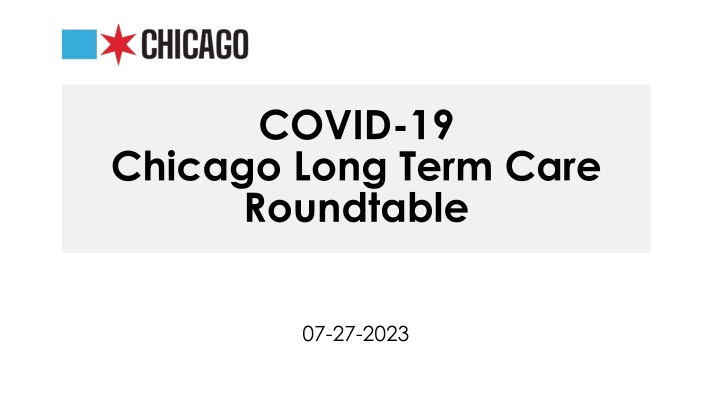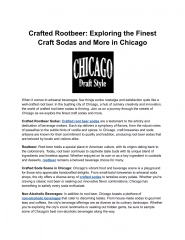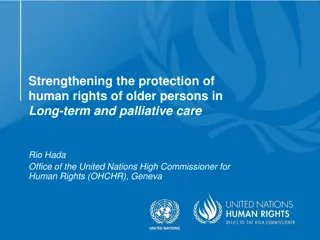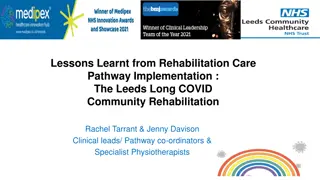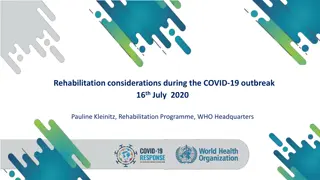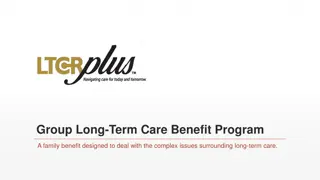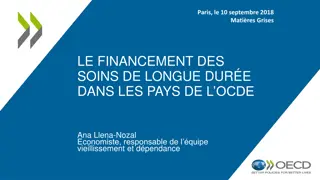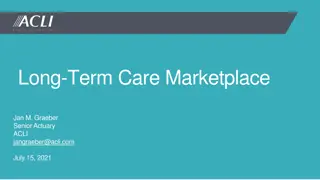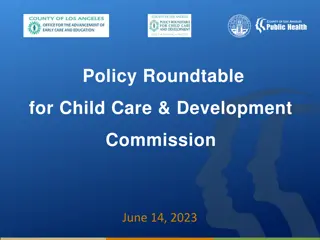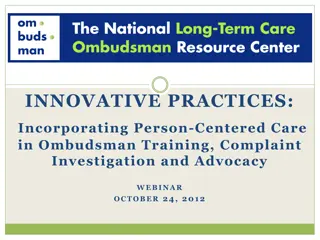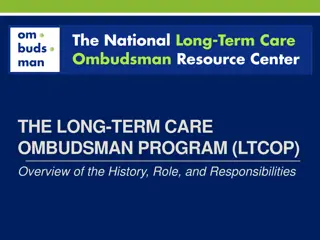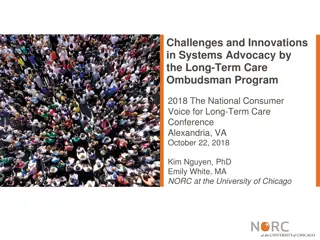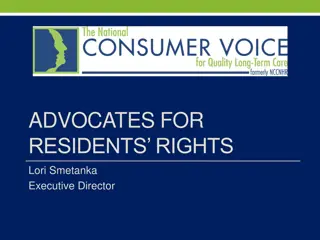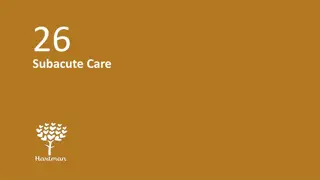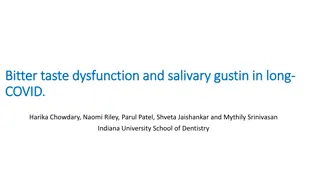COVID-19 Long Term Care Roundtable in Chicago
This document provides information on a COVID-19 Long Term Care Roundtable held in Chicago on July 27, 2023. It includes topics such as COVID-19 epidemiology, updates, transmission precautions, shingles, bed bugs, iHealth rapid test, and strategies for increasing vaccine uptake. Data on SNF COVID-19 cases, variant proportions, Cook County statistics, respiratory virus surveillance reports, and reminders on staff and resident testing frequencies are also covered.
Download Presentation

Please find below an Image/Link to download the presentation.
The content on the website is provided AS IS for your information and personal use only. It may not be sold, licensed, or shared on other websites without obtaining consent from the author.If you encounter any issues during the download, it is possible that the publisher has removed the file from their server.
You are allowed to download the files provided on this website for personal or commercial use, subject to the condition that they are used lawfully. All files are the property of their respective owners.
The content on the website is provided AS IS for your information and personal use only. It may not be sold, licensed, or shared on other websites without obtaining consent from the author.
E N D
Presentation Transcript
COVID-19 Chicago Long Term Care Roundtable 07-27-2023
Agenda COVID-19 Epidemiology & Updates Transmission Based Precautions Shingles Bed Bugs iHealth Rapid Test Expiration Dates COVID-19 Reporting Project Firstline Increasing Vaccine Uptake CDPH Emergency Preparedness Liaison 2
Chicago Dashboard 3 Source: https://www.chicago.gov/city/en/sites/covid-19/home/covid-dashboard.html
Data as of 07/19/2023 SNF COVID-19 Cases (Mar. 1, 2022 July 19, 2023) 3 (4%) SNFs have active outbreaks 4
COVID-19 Variant Proportions 5 Source: https://covid.cdc.gov/covid-data-tracker/#variant-proportions
CDC COVID Data Tracker: Cook County 6 Source:https://covid.cdc.gov/covid-data-tracker/#cases_new-admissions-rate-county
Chicago Respiratory Virus Surveillance Report Current Week & Cumulative 7
Chicago Respiratory Virus Surveillance Report Seasonal Trends 8
Reminder: Minimum Routine Staff Testing Frequency Vaccination Status Hospital Admission Level All Testing Frequency No required routine testing* Not up to date All No required routine testing* Up to date** * Unless symptomatic, had a high-risk exposure, or your facility is in outbreak and performing unit/broad-based testing. ** An individual has received all COVID-19 vaccinations for which they are eligible 9 Source: IDPH Updated Interim Guidance for Nursing Homes Following the End of the Public Health Emergency
Reminder: Minimum Routine Resident Testing Frequency Vaccination Status Hospital Admission Level All Routine Testing Frequency No required routine testing* Not up to date All Low, Moderate, Substantial High No required routine testing* No required routine testing* Up to date New and readmissions, regardless of vaccination status New and readmissions, regardless of vaccination status Facility discretion* *Unless symptomatic, following a high-risk exposure, or your facility is in outbreak and performing broad-based testing. 10 Source: IDPH Updated Interim Guidance for Nursing Homes Following the End of the Public Health Emergency
New IDPH TBP Guidance Document New guidance document released on June 21, 2023 Best Practices for the use of transmission-based precautions in SNFs Guidance with placing a resident on Contact Precautions or Enhanced Barrier Precautions Assist with decision-making regarding the placement of residents with organism of concern 11
Definitions MDROs: multidrug resistant organisms Methicillin-resistant Staphylococcus aureus (MRSA) ESBL-producing Enterobacterales Vancomycin-resistant Enterococci (VRE) multidrug-resistant Pseudomonas aeruginosa multidrug-resistant Streptococcus pneumoniae XDROs: extensively drug-resistant organisms entered in the XDRO registry Candida auris Carbapenem-resistant Enterobacterales (CRE) Carbapenem-resistant Acinetobacter baumannii (CRAB) Carbapenem-producing organisms (CPOs) Endemic CPOs: CRE-KPC, CRAB OXA 23, CRAB OXA 24/40, or unknown mechanisms Rare or low prevalence CPOs: CRE- NDM or CRE-VIM 12
Facility-level Approaches Pathogen-based XDROs: EBP for residents with an XDRO MDROs: use a risk-based approach to determine what type of precautions are warranted for residents colonized or infected with MDROs. Risk-based EBP for residents with wounds requiring dressing (e.g. pressure ulcers, diabetic foot ulcers, unhealed surgical wounds, and chronic venous stasis ulcers) EBP for residents with any indwelling devices (e.g. central lines, urinary catheters, feeding tubes, hemodialysis catheters, tracheostomies, and ventilators) 13
Enhanced Barrier Precautions (EBP) Single or private rooms are not required Don PPE during high-contact resident care activities (e.g. dressing, bathing, transferring, providing hygiene, changing linens, changing briefs, or assisting with toileting, care or use of indwelling devices, wound care requiring a dressing) Resident is NOT restricted to their room Resident is allowed to participate in communal dining and group activities EBP does not impose the same restrictions as contact precautions, EBP is intended to be in place for the duration of a resident s stay or until resolution of wound or discontinuation of indwelling device 14
Contact Precautions Single room is preferred Don PPE upon room entry and discard PPE before exiting the patient room Resident is restricted to their room except for medically necessary care Resident should not participate in communal dining or group activities Intended to be time limited, plan for discontinuation or de-escalation Use disposable patient-care equipment or implement patient-dedicated use Use contact precautions for residents with: Draining wounds that cannot be contained and/or diarrhea Other infections/conditions listed in CDC s Appendix A C. difficile Scabies Norovirus 15
Signage 16
TBP Question 1 A resident is admitted with a diabetic ulcer that requires dressing. The ulcer was cultured at a previous facility and the lab results show no growth. What type of precautions are indicated? a)Enhanced barrier precautions b)Contact precautions c) Standard precautions 18
Answer a) Enhanced barrier precautions Enhanced Barrier Precautions are recommended for residents with indwelling medical devices or wounds, even if they have no history of MDRO colonization or infection and regardless of whether others in the facility are known to have MDRO colonization. This is because devices and wounds are risk factors that place these residents at higher risk for carrying or acquiring a MDRO and many residents colonized with a MDRO are asymptomatic or not presently known to be colonized. 19 Source: https://www.cdc.gov/hai/containment/faqs.html
TBP Question 2 A resident on enhanced barrier precautions (for XDRO infection) is now experiencing loose stools and has tested positive for C. difficile. Should the resident remain on enhanced barrier precautions? a)Yes, continue with enhanced barrier precautions b)No, change to contact precautions 20
Answer b) No, change to contact precautions Residents with C. difficile should be placed under contact precautions. Continue contact precautions for the duration of the C. difficile infection. Enhanced Barrier Precautions do not replace existing guidance regarding use of Contact Precautions for other pathogens and conditions in nursing homes. Refer to Appendix A Type and Duration of Precautions Recommended for Selected Infections and Conditions of the CDC Guideline for Isolation Precautions. 21 Source: https://www.cdc.gov/hai/containment/faqs.html
TBP Question 3 A resident who does not have an indwelling device or wound has tested positive for MRSA colonization. What type of precautions are indicated? a)Enhanced barrier precautions b)Contact precautions c) Use a risk-based approach to determine precautions needed 22
Answer c) Use a risk-based approach to determine precautions needed A facility should use a risk-based approach to determine what type of precautions (contact or EBP), if any, are warranted for a resident colonized or infected with MDROs. A risk-based approach takes into consideration the resident s clinical situation and the prevalence or incidence of MDROs in the facility. Consider this approach for residents with organisms not previously encountered in the facility. 23
Shingles (Herpes Zoster) Reactivation of varicella-zoster virus, the same virus that causes chickenpox You cannot get shingles from someone with shingles or chicken pox You can get chicken pox from someone with shingles, if you have never had chickenpox or the chickenpox vaccine A rash most commonly appears on the trunk along a thoracic dermatome or on the face and it usually does not cross the body s midline. The rash develops into clusters of vesicles. New vesicles continue to form over 3 to 5 days, and the rash progressively dries and scabs over. The rash usually heals in 2 to 4 weeks. Susceptible HCWs should not provide direct resident care if immune caregivers are available Infection control measures depends on the resident s immune status and rash presentation 24 Source: https://www.cdc.gov/shingles/hcp/clinical-overview.html
Shingles (Herpes Zoster) Localized Shingles Source: https://myvision.org/eye- conditions/shingles-on-face/ Disseminated Shingles Source: https://www.actasdermo.org/en-clinical- characteristics-outcomes-in-population-articulo- S1578219016303638 25
Shingles (Herpes Zoster) Precautions 26 Source: https://www.cdc.gov/shingles/hcp/hc-settings.html
Shingles (Herpes Zoster) Management of Staff For localized shingles in immunocompetent staff: Cover lesions and restrict from care of high-risk residents until all lesions are dry and scabbed If lesions cannot be completely covered, exclude from from work until all lesions are dry and scabbed For disseminated shingles exclude from work until all lesions are dry and scabbed For localized shingles in immunocompromised staff exclude from work until disseminated infection is ruled out 27 Source: https://www.cdc.gov/shingles/hcp/hc-settings.html
Shingles (Herpes Zoster) Vaccine CDC recommends adults 50 years and older get two doses of the recombinant zoster vaccine (Shingrix)to prevent shingles and related complications in adults 50 years and older. Two doses separated by 2 to 6 months. You can get Shingrix even if in the past you: Had shingles Received Zostavax Received varicella (chickenpox) vaccine 28 Source: https://www.cdc.gov/vaccines/vpd/shingles/hcp/shingrix/recommendations.html
Bed Bugs Health care facilities experience a constant inflow of people and their belongings; and can expect bed bugs to be introduced from time to time. Signs can include: Bite marks often circular, inflamed and somewhat linear in arrangement Shed exoskeletons usually an amber color Bed bugs in the fold of mattresses and sheets Rusty colored blood spots due to their blood-filled fecal material Sweet musty odor if heavily infested 29 Source: https://www.cdc.gov/parasites/bedbugs/faqs.html
Bed Bug Identification When bed bugs are suspected, specimens should be collected and submitted to entomologists or pest management professionals qualified to identify them. Without specimens identified as bed bugs, a report of suspected bites does not necessarily mean a facility is bed bug infested. Skin markings may be consistent with bed bug bites, however other biting arthropods and environmental and medical conditions can produce similar markings. Visible reactions may not appear for two weeks after the bites or bites may not appear at all. An experienced pest management professional should inspect and treat as needed all areas where bed bugs are suspected, as well as all rooms adjacent, above and below. 30 Source: http://www.idph.state.il.us/envhealth/BedBugs_HealthCareFacilities.pdf
Bed Bug Management When bed bugs are discovered in a resident room, the resident should be bathed or showered, clothes changed, and transferred to another room. Resident belongings, equipment and furnishings including beds, should not leave the room until thorough inspection finds them bed bug free. Linen should be carefully removed, tightly sealed in bags, put directly into a washer or dryer and dried on the hot setting for at least 20 minutes to kill all stages of bed bugs. Seal potential bed bug access points to adjacent rooms, by filling gaps that occur where plumbing penetrates common walls and around electrical, cable and phone outlets. Waiting rooms, visitor lounges, common areas, laundry rooms, and equipment such as wheelchairs and food carts, should be regularly inspected for bed bugs. 31 Source: http://www.idph.state.il.us/envhealth/BedBugs_HealthCareFacilities.pdf
Expiration Dates for Rapid Tests On Jan 11, 2023, the FDA granted another three- month shelf-life extension for the iHealth COVID-19 Antigen Rapid Test, which extended the shelf-life of all iHealth tests from 6 months to 15 months Use the link below to check the most updated expiration date of your kit: https://ihealthlabs.com/pages/news#expiration 32
COVID-19 Reporting Continue reporting positive cases to the redcap SNF COVID-19 Case Report Form Complete the COVID-19 Therapeutics Utilization form on a weekly basis If no therapeutics were administered, select Did NOT administer therapeutics 33
Project Firstline Gus E. Turner, MPH Project Firstline Project Manager, CDPH
Project Firstline Overview Project Firstline is the Center for Disease Control s (CDC) National Training Collaborative for Healthcare Infection Control education Project Firstline (PFL) brings together more than 75 healthcare, academic, and public health partners to reach healthcare workers across the country PFL offers educational resources in a variety of formats to meet the diverse learning needs and preferences of the healthcare workforce 35
Available Resources Learn about Infection Control in Health Care: CDC s Project Firstline provides innovative and accessible resources so all healthcare workers can learn about infection control in health care. Topics include 14+ foundational IP&C (e.g., hand hygiene, environmental services, ventilation, PPE, how viruses spread, etc.), Recognizing Risk using Reservoirs, Where Germs Live training toolkits, and more interactive resources. Lead an Infection Control Training: Our facilitator toolkit is designed to work with your team s learning styles and busy schedules (10-, 20-, and 60-minute scripted sessions). Access Infection Control Educational Materials: Find short videos, fact sheets, job aids, infographics, posters, printed materials, interactive computer lock screens, and social media graphics to utilize at your facility on foundational IPC topics. Earn Continuing Education: Earn CEU s on CDC Train for PFL content. Translated Resources: IPC materials translated into Spanish & additional languages. 36
Print Materials & Job Aids Several print materials and job aids available on foundational IP&C topics. Available for free download on CDC's website. Including lock screens for staff computers. We are happy to offer professional printing support for poster requests! Please see our team after the presentation to request print materials. For remote guests, please email: projectfirstline@cityofchicago.org 37
2023 Learning Needs Assessment Thank you to our respondents thus far! Primary workplace: 31.0% Acute care hospital 13.8% Outpatient healthcare facility 1.7 % Long-term acute care hospital Topics of interest for NEW Trainings for frontline staff: Transmission-based precautions/enhanced-barrier precautions (73.7%) Bugs in healthcare settings (63.2%) e.g., maggots, bed bugs, scabies, etc. Vaccines and Vaccination (57.9%) Antibiotic resistance/MDRO basics (57.9%) Early identification & patient screening, with case studies (56.1%) Sterilization and high-level disinfection basics (49.1%) e.g., how to know if something is sterile, sterile supply storage, transport soiled and clean instruments/devices, etc. Primary professional roles: 24.1% Infection preventionists 24.1% Registered nurses 10.3% Healthcare administrators 39
Your Chicago Project Firstline Team CDPH Infection Preventionist: Your facility's main contact for all infection prevention and control questions General contact information: cdphhaiar@cityofchicago.org PFL-Chicago Education Specialists: Contact our team to hear more about specific Chicago-based educational opportunities! We offer many resources including virtual or onsite trainings, webinars, and helpful newsletters. CDPH Project Firstline email: projectfirstline@cityofchicago.org Visit our Chicago Health Alert Network (HAN) page for recorded webinars,newsletter information,and upcoming events. Stay up to date on exciting new resources! 40
Increasing Vaccine Uptake: COVID-19 Vaccine Posters & Education Sessions Leirah Jordan TREAT COVID-19 Program Project Manager, Contractor 41
Updated Covid-19 Vaccine On average, 45% of all staff, and 70% of residents in our Chicago- based skilled nursing facilities have received at least one dose of the updated COVID-19 vaccine. However, there are many SNFs with lower than average vaccine coverage Staying up to date with recommended COVID-19 vaccines still remains the safest and most effective way of protecting yourself from serious illness, hospitalization, and death from COVID-19 CDC currently recommends adults get the updated Pfizer or Moderna COVID- 19 vaccine, regardless of whether they ve received any original COVID- 19 vaccines. People ages 65 years and older have the option to receive 1 additional bivalent vaccine dose 42
NEW! COVID-19 Vaccine Poster for Residents Families New family posters discuss the benefits of the updated COVID-19 vaccine, especially for those at high-risk Providing families of SNF residents with valuable vaccine information may encourage them to discuss staying up to date with routine vaccinations with their loved ones Family Posters will be mailed to each skilled nursing facility along with additional staff and resident vaccine posters 43
NEW! Resident & Family Vaccine Education Sessions, Schedule Today! To help increase vaccine uptake, CDPH is partnering with CIMPAR through The Rapid Response Evaluation And Treatment of COVID-19 (TREAT COVID-19) program to offer Resident and Family Vaccine Education Sessions! The TREAT Program invites facility residents and their families to attend an on-site session to discuss: Questions and concerns about COVID-19 vaccines The importance of staying up to date with recommended respiratory vaccines (covid, flu, and rsv) Why updated covid-19 vaccines offer better protection than those previous What to expect this fall Updated covid-19 vaccines will be available, at no cost, for all interested facility residents and family members Contact Leirah.jordan@cityofchicago.org to learn more or schedule 44
I am the CDPH Emergency Preparedness Liaison to Long Term Care and Assisted Living Facilities. Although CDPH is not a regulatory agency, I am happy to help build your response capacity through preparedness efforts as required by your regulatory agencies such as CMS. I can assist with the development and/or review of: Emergency Operations Plan (EOP) Exercise programs Incident Command System Staff training Mark McCarville Senior Emergency Management Coordinator mark.mccarville@cityofchicago.org o. 312/747-9581 c. 312/350-0940 45
LTCR Invite Request Form Next roundtable August 24 If you do not receive calendar invitations to the roundtable webinars and/or have a new staff member that you would like to attend, please complete this brief survey 46
Questions & Answers For additional resources and upcoming events, please visit the CDPH LTCF HAN page at: https://www.chicagohan.org/covid-19/LTCF 47
